I was wondering if it is possible to add custom attributes to the built-in function plot_timetrend of the keyATM R-package? My graph produced with
fig_timetrend <- plot_timetrend(out,
time_index_label = df$year,
xlab = "Year of complaint submission",
scales = "fixed",
width = 5)
yields the following:
This graph seems fine, but it would be desirable to add a ggtitle and customize axes since these functions are not supported by plot_timetrend. Can I do it with ggplot? And if yes, how?
Thank you in advance.
P.S. You can generate the output model with this code:
out <- keyATM(docs = keyATM_docs,
no_keyword_topics = 9,
keywords = keywords,
model = "dynamic",
model_settings = list(time_index = df_period$period,
num_states = 2),
options = list(seed = 400,
store_theta = TRUE,
thinning = 5))
KR, Aleksandra

